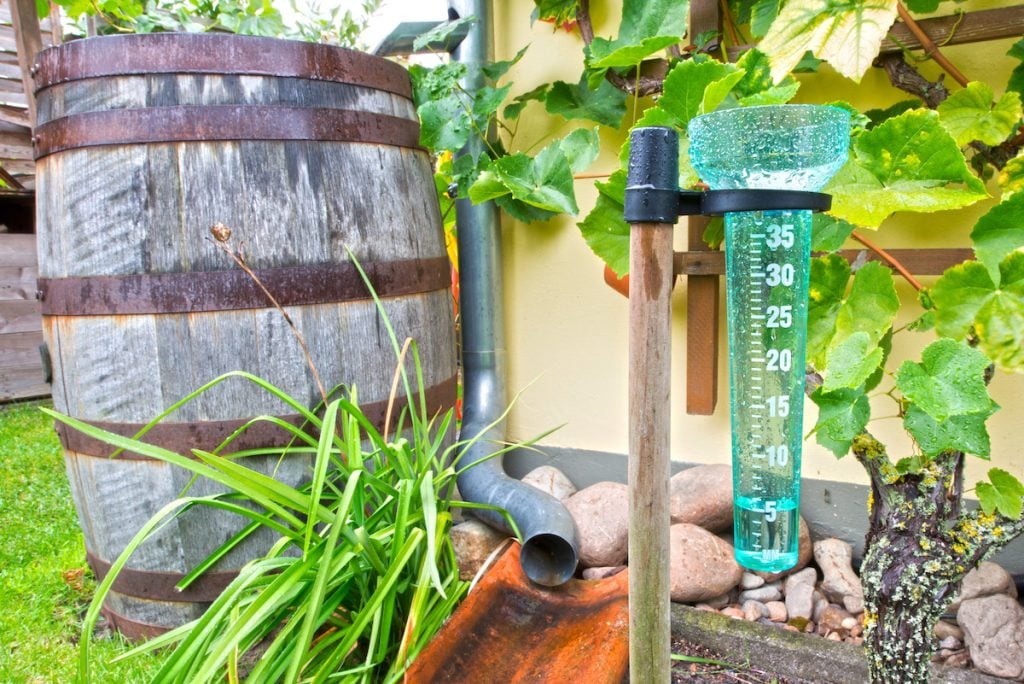Water Harvesting for Gardening in Water Scarce Locations
 Every day, the average American household uses approximately 320 gallons of water for various uses. Of that, about a third of that goes toward outdoor usage. That percentage can increase to 40 during warmer months when vegetation, including flowers, vegetables and landscaping plants grow at a heightened rate. In drought-prone areas such as the Los Angeles basin, gardening can often be a challenge.
Every day, the average American household uses approximately 320 gallons of water for various uses. Of that, about a third of that goes toward outdoor usage. That percentage can increase to 40 during warmer months when vegetation, including flowers, vegetables and landscaping plants grow at a heightened rate. In drought-prone areas such as the Los Angeles basin, gardening can often be a challenge.
Reviving an Ancient Practice
With the trend toward conservation, water harvesting has increased greatly in popularity in recent decades. The practice of harvesting rainwater begin in the Middle East 4,000 years ago and has been used by farmers up until a few generations ago when municipal water supplies made water distribution simple. In fact, much of the world, especially in undeveloped areas, still uses rainwater harvesting methods to irrigate crops.
Collecting rainwater has a number of advantages. In urban areas, it helps prevent water pollution as rainwater runoff doesn’t mix with chemical fertilizers, oils and other substances before filtering through the ground into the water table. Secondly, rainwater provides healthier nutrition for your plants than what you would get from a municipal water supply. It’s free of the salts and pollutants on ground and surface water, plus it doesn’t have the chlorine inherent in most municipal systems. Additionally, the natural acidity and temperature of rainwater are good for most soils.
Constructing Your System
Most homes already contain the core elements of a rainwater collection system in the form of a roof and rain gutters. Prior to adding new elements, it’s important to ensure your roof and gutter systems are in good shape as they form the foundation of any water collection.
Determining Your Collection System Requirements
If you ‘ve tried to do some of this on your own, you’re probably already familiar with many of the components. Every rainwater collection system should have these components:
- Catchment system, generally your roof
- Specialized gutters, downspouts and piping to transport the water, probably the most important components
- A roof washer to help clean away debris and bird feces
- Storage barrels
- A pump-driven or gravity-driven system to distribute water to the garden
Roof materials will affect the quality of the water and the amount collected. Asphalt shingles and rolled roof are not as desirable as smooth steel as rougher surfaces absorb more water. If you have wooden shingles treated with chromated copper arsenate or have anti-moss strips on your roof, you won’t be able to use it as a collection system because of the toxic chemicals that these substances produce.
To increase storage capacity, barrels may be hooked together with pipe. Most barrels hold 40 to 80 gallons and are heavy when filled, so make sure they have strong foundations and support. Collection barrels should also have tight-fitting lids to prevent mosquitos from entering and breeding. Most barrels are position near downspouts so water can be funneled in directly. Because they’re not pretty, you may want to conceal them with shrubbery or other landscaping elements.
Directing Water Flow
Moving water to your landscape is another important consideration. Gravity systems use storage tanks elevated above your garden and often have passive-drip irrigation systems. Other options include using hand pumps or solar-powered pumps to move the water at will into your landscape.
Overflow is another consideration as your system will have a storage limit. Because fresh water is so precious, make sure your design includes an overflow outlet that will direct water to trees or an area such as a dry streambed so that every drop will be used.
Selecting Plants for Your Garden
Even with a water collection system in place, you may run into times when stored water is running low and you may have to ration it. Selecting drought tolerant vegetables and flowers will make the most of your landscape. Many plants need consistent watering from germination through flowering but will withstand drought conditions later on. These include nightshades such as tomatoes, peppers and eggplant. Vining vegetables like cucumbers and many squash varieties also tolerate drought once flowering has occurred and fruit has set.
Similarly, many flowers are able to adapt to wide extremes in water availability. Ask the experts at your local garden center about flowers native to your area. Native plants will usually tolerate extremes better than non-native flowers. Others that you can consider are purple coneflowers, black-eyed Susan and sedum. You may also want to plant ornamentals such as switchgrass, which briefly produces small purple flowers. Succulents, including echeveria, agave, aloe and ragworts all require minimal amounts of water.
Once vegetables are in, consider spreading a layer of organic mulch several inches thick to help keep the ground moist as well as to feed the plants as the mulch breaks down. Mulch can be particularly valuable when drought is at its peak.
Overall, remember that most roof water collection systems are not potable. If you want to install one to provide drinking water, you’ll need to install an additional filtration system to remove contaminants.
The post Water Harvesting for Gardening in Water Scarce Locations appeared first on Rain Gutter Pros Inc.